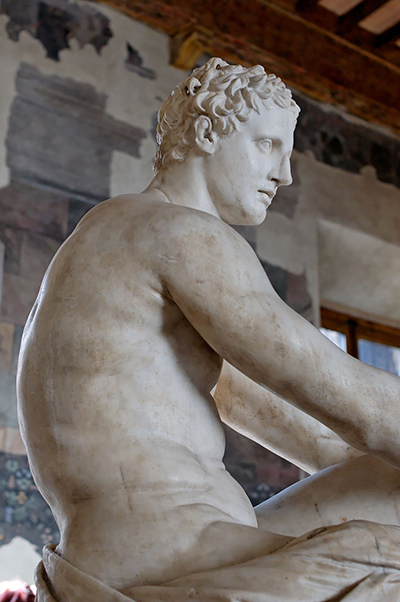 Buy Art Prints Now
Buy Art Prints Nowfrom Amazon
* As an Amazon Associate, and partner with Google Adsense and Ezoic, I earn from qualifying purchases.
The sculpture of Ares Ludovisi was an original Roman copy of a Greek sculpture of Ares, god of war. This sculpture shows Ares in a relaxed setting with examples of the armour of war.
Bernini was commissioned to restore the sculpture after it had been found during maintenance works in Rome. This was requested by the Ludovisi family in Rome to add to their collection. Gian Lorenzo Bernini was an artist and architect of Italy in the 17th century; whose personal work invented a particular contemporary style of art. He mainly produced sculptures and fountains for architecture in his lifetime.
Bernini had a talent for fine-detailed work, which depicted more textures in hair and skin and gave the figures an appearance of natural movement. He worked with marble a great deal, and he could give his figures as much detail as if he was working in bronze. Bronze casts were usually made from sculptured plaster casts, which were softer and easier to sculpt; so to achieve this detail with hard marble was a very special gift.
To restore the Ares sculpture, Bernini would have had to work with an ancient statue and try to bring the statue back to life. This was done lightly for the Ares sculpture; Bernini resurfacing the main statue, replacing a right foot to the statue and the addition of a child's figure playing at Ares' feet. The child figure is thought to have been of Eros as a child, added by Bernini. There was no such figure identified on the original Roman copy. In Greek mythology, Eros was the son of Aphrodite, and the father could have been Ares. Usually, restoration added some contemporary style to ancient sculptures that were recovered in the 17th century, and Bernini left his own mark on this sculpture.
It was quite an unconventional way of presenting the sculpture. Bernini sought to add more to the presence of a relaxed Ares than the sculpture depicted. By adding a playful Eros as a child, he gave Ares a distinctly romantic presence. This depiction of Ares gives the god of war a more relaxed and even romantic look; and as Ares was also associated with Aphrodite, the addition of the child Eros would be appropriate. Ares is in a relaxed sitting position, sitting on and holding arms and armour of war. His presence is generally relaxed as a figure and very beautiful. Too beautiful, perhaps, for a war god.
Bernini saw the romance and beauty with this sculpture and defined this aspect by adding a playful child, possibly Eros. Bernini only lightly restored this statue. It had been carved from marble and most of the detail would have been faintly visible. In this case, he could follow the original sculpture. This statue is now housed in the National Museum of Rome in Italy, and this museum is divided into four buildings. The statue is located in the Palazzo Altemps National Roman Museum, Rome. Since it was restored, the statue was auctioned along with other works of art and bought by the Roman National Museum.




